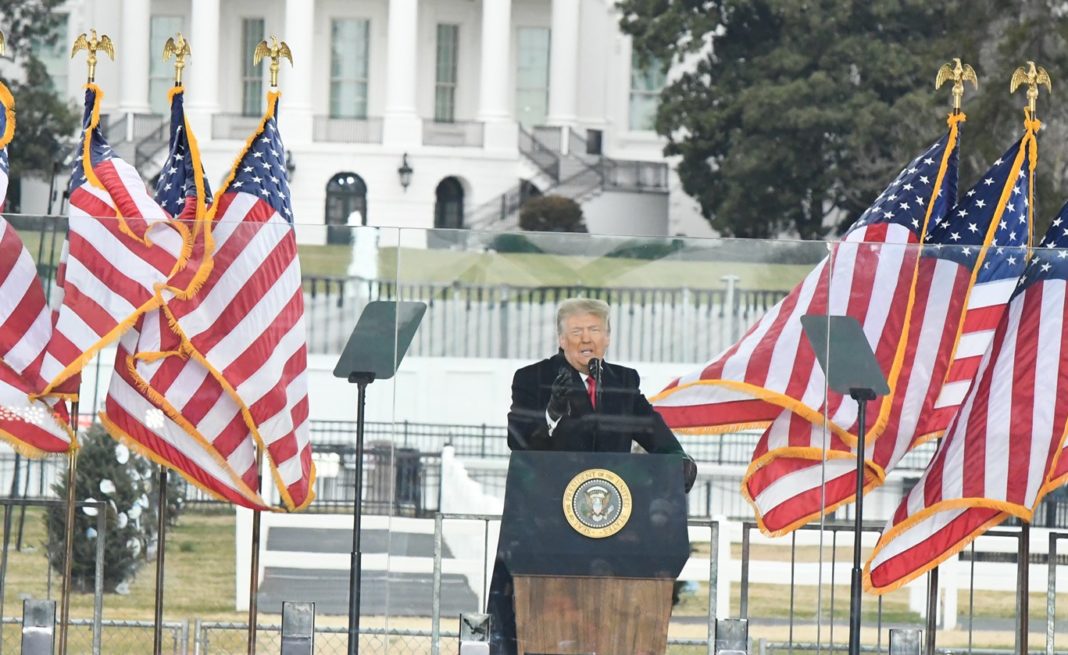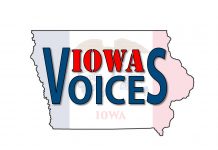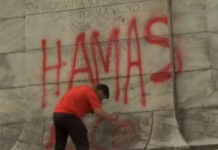By Donald Bohlken
American Thinker
President Biden and others claim that President Trump incited the Capitol Riot, falsely described as an “insurrection”, on January 6, 2021. This belief explains Colorado’s failed attempt to remove Trump’s name from the ballot because he is an “insurrectionist”, as well as a national YouGov poll which found that 54% of Americans approved of the Colorado action. It is now used as a justification for Biden to refuse to debate Trump. This claim remains a serious problem, not only for Trump, but for obtaining an accurate history of what happened on January 6th.
A rational evaluation of Trump’s words and actions, and other factors, demonstrates that this claim is nonsense.
If Trump wanted a riot, why would he repeatedly request National Guard troops for January 6th?
On January 3, 2021, President Trump asked Secretary of Defense Miller and General Milley to assign National Guard troops to counter violence on January 6th. Miller responded “We’ve got a plan and we’ve got it covered.”
Troops could be legally provided only if requested by law enforcement. The Capitol Police declined the Defense Department’s offer of troops.
The Secret Service, Marshalls Service, Park Police, and the Department of Homeland Security informed Defense “that they did not anticipate needing DoD assistance on January 6th.”
The District of Columbia requested 340 troops, primarily for crowd control at metro stations and intersections.
On January 5th, Trump asked Secretary Miller for 10000 troops “to do what’s required to protect the American people.”
Thus, by January 5th, President Trump had not only twice requested national guard troops, but had been assured that the Department of Defense had “a plan and we’ve got it covered.”
A 1969 executive order authorized Secretary Miller to order the District of Columbia National Guard to aid civil authorities under the President’s direction. Trump’s prior communications effectively “green lighted” National Guard deployment in response to subsequent Capitol Police requests. No further communication was necessary.
As his speech revealed, Trump wanted Mike Pence to delay the electoral vote count while the legislatures in battleground states reconsidered the certification of Biden electors. It would appear this delay would be announced at the joint session of Congress to consider the electoral vote.
In the alternative, Trump’s congressional allies planned to challenge, under the authority of the Electoral Count Act of 1887, the electors from those battleground states affected by election law violations. This would involve two hours of concurrent debate in House and Senate chambers for each challenge. This is why Trump called for protesters to “cheer on” and give “pride and boldness” to Republican legislators at the Capitol.
Both plans required order at the Capitol, not a riot.
Trump’s speech at the Ellipse, a mile and a half from the Capitol, began at noon.
To incite a riot, it is self-evident that the inciting speech must be heard by those allegedly incited. According to legal authority, the speech must call for violence.
It is doubtful that anyone at the start of the riot heard Trump’s calls for a march to the Capitol. Ray Epps claims he left Trump’s speech when it began. The Proud Boys were at the Capitol an hour before the speech began.
Although Capitol Police Chief Sund asserted the violence began at 12:40 p.m., according to Capitol Police and Defense Department timelines and BBC video, the Capitol grounds perimeter was breached at 12:53 p.m. To arrive by 12:53 p.m., rioters from the Ellipse would have had to leave by 12:08 p.m. because it took 45 minutes to walk to the Capitol.
It wasn’t until 12:17 p.m., however, that Trump first mentioned the Capitol: “After this, we’re going to walk down and I’ll be there with you. . . . We’re going walk down to the Capitol, and we’re going to cheer on our brave senators, and congressmen and women. . . . We have come to demand that Congress do the right thing and only count the electors who have been lawfully slated, lawfully slated. I know that everyone here will soon be marching over to the Capitol building to peacefully and patriotically make your voices heard.”
At the end of his speech, at 1:11 pm, Trump stated, “[W]e’re going to walk down Pennsylvania Avenue, . . . we’re going to try and give… our Republicans,, . . . the kind of pride and boldness that they need to take back our country….” You can’t instill “pride and boldness” in Republican Congressmen by assaulting them. Trump obviously believed that any walk to the Capitol had not yet begun.
Both statements are calls for peaceful protest.
A second stage and speakers were lined up to address the crowd at the Supreme Court once the crowd left Trump’s speech at the Ellipse. Why would this be done if it was expected that those from the Ellipse were to riot as opposed to peacefully protesting?
At 1:09 p.m., Trump stated: “[N]obody until I came along, had any idea how corrupt our elections were. . . . ‘Something’s really wrong. Can’t have happened.’ And we fight. We fight like Hell and if you don’t fight like Hell, you’re not going to have a country anymore.”
This statement could not have incited the riot which began sixteen minutes before the statement was made.
If a hearer of this statement had left immediately, he would not arrive at the Capitol until 1:54 p.m., at least an hour and one minute after the perimeter breach.
Trump’s “fighting” statements never referred to physical violence, unlike Obama’s statement: “If they bring a knife to the fight, we bring a gun. Because from what I understand, folks in Philly like a good brawl. I’ve seen Eagles fans.”
These references included that Trump “fought like hell” for Supreme Court Justices (another nonviolent “hell” statement); Rudy Guilani and Jim Jordan are “fighters”; primarying Republicans who “don’t fight”; Republicans needing to “fight much harder”; refering to his speech as “fighting”; refering to Congressmen who learned they could reject illegal votes as “warriors”; Georgia Senatorial candidates Loeffler and Perdue “fought a good race”; and “our fight against the big donors, big media, big tech and others”.
Trump’s speech equated “fighting” with argument: “they’d argue with me, I’d fight. So I’d fight, they’d fight. I’d fight, they’d fight. Boop-boop. You’d believe me, you’d believe them. Somebody comes out. They had their point of view, I had my point of view. But you’d have an argument.. . .”
At 2:38 pm, Trump tweets “Please support our Capitol Police and Law Enforcement. They are truly on the side of our Country. Stay peaceful!” At 3:13 p.m., he tweets, “asking for everyone at the U.S. Capitol to remain peaceful. No violence! Remember, WE are the Party of Law & Order… .” Twenty-three minutes later, the President’s press secretary tweets that the national guard is on the way at the President’s direction. After this, the President twice calls for those in the Capitol to go home in peace. These actions refute any violent intent.
The charge that Trump incited the Capitol Riot is false.
















